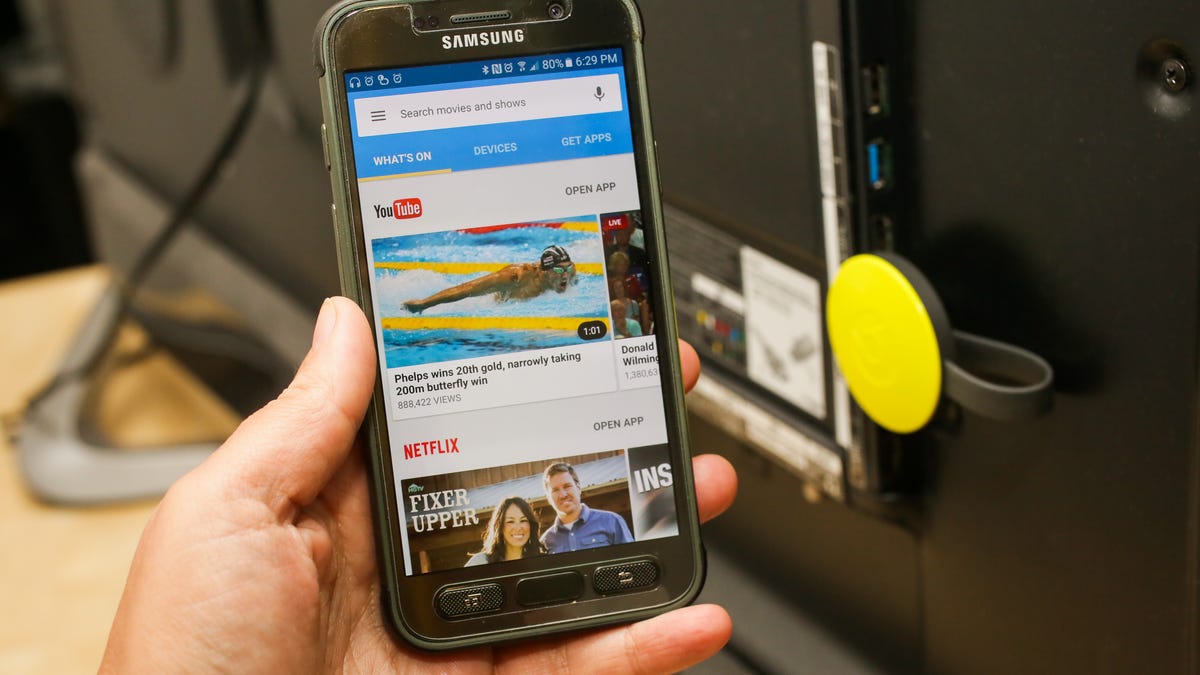Upgrade your family
Even if your family is still getting by on outdated tech, your visit home needn't feel like a time warp. Here are cheap and simple ways to upgrade their experience and yours.

Stop me if this sounds familiar: You're home for the holidays, trying to get comfy in your childhood bedroom. You're almost ready to send out a perfectly crafted festive greeting when -- fwishhp. The Wi-Fi cuts out, and your message is gone. Now nobody's going to see your artful arrangement of holly and candy-cane emojis. Christmas is ruined. Thanks a lot, Dad.
If your folks insist that the home tech setup they've had since 2003 works just fine and have no desire to upgrade, going home can feel like stepping into a time warp. But there's an easy way to make everything better. These affordable, under-the-radar upgrades make great gifts, and they'll make your holidays at home infinitely easier.
Fix that Wi-Fi
You can't do anything about your family's lousy broadband package, but you might be able to improve the range of their router, even if it is a bit old. Your parents may have been putting up with Wi-Fi that works fine downstairs but neglects the top floor. Or maybe their home is filled with thick, old walls or twisty, signal-unfriendly corridors.
If that's the case, hook them up with a D-Link DAP-1320 Wireless N300 Range Extender (available from $23, £16 or AU$48) or something similar. By placing it at the edge of your network's Wi-Fi range, it'll carry the signal further into the house. And to install it, you only need to plug it into the wall. Voila! Your favorite armchair is no longer a Wi-Fi black hole.
The deceptively simple Amazon Echo Dot.
Smarten up that home
Maybe in a few years, smart-home technology will be simple. Every home improvement will be integrated into a single system, and you'll never have to fiddle with services like IFTTT. For the moment, however, it's too much of a hassle to foist on your unwitting relatives.
But if you want a less scary introduction to the smart home, look no further than the Amazon Echo Dot, which costs $50 or £50. It's not available in Australia, but the price converts to about AU$65. On its surface, it's a speaker with a built-in electronic assistant that plays music, sets alarms and remembers shopping lists. But you also can integrate it with a growing number of smart devices like smart bulbs and switches and connected home platforms. So if your folks ever do decide they want to tinker with smart thermostats, switches and lights, they'll be able to control them through the Echo.
Clear out those cassettes
Interested in smart music players but don't want to shell out for an Echo Dot? Here's an even more affordable option. Whether it's a closetful of CDs or a crate of unraveling cassette tapes, most family homes have at least one stash of music on a long-obsolete format. And most families have at least one member determined to clear out the stash.
The vast majority of the music we listen to is now available in digital formats. And thanks to the Chromecast Audio ($35, £30 or AU$49), you can now play that music from your home stereo system. So you can keep the most treasured pieces from your collection -- the handcrafted mixtapes and rare vinyl -- but send those Bryan Adams singles to the thrift store where they belong.
Belkin's smart switches can stop these upgrades from racking up your energy bills.
Save on electricity
It doesn't matter how old you get -- your mom will never stop nagging you about running up the electricity bills. The good news is that you can reassure her with a WeMo Insight Switch ($50, £50 or AU$69).
Plug this smart gadget into a main socket, and then connect it to anything in the house you suspect of power-guzzling -- whether that's a computer, a TV or a stereo system. Mom can then track how much it's costing her per month and adjust her lectures as needed. And if she suspects you're using too much electricity, she can remotely turn it off. Best hope the power doesn't go to her head.
This story appears in the winter 2016 edition of CNET Magazine. For other magazine stories, click here.

